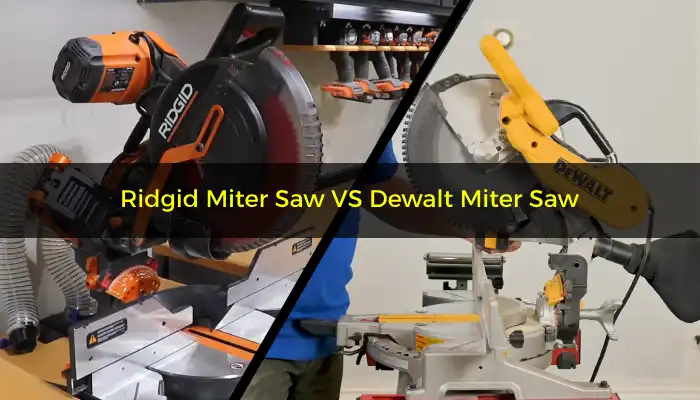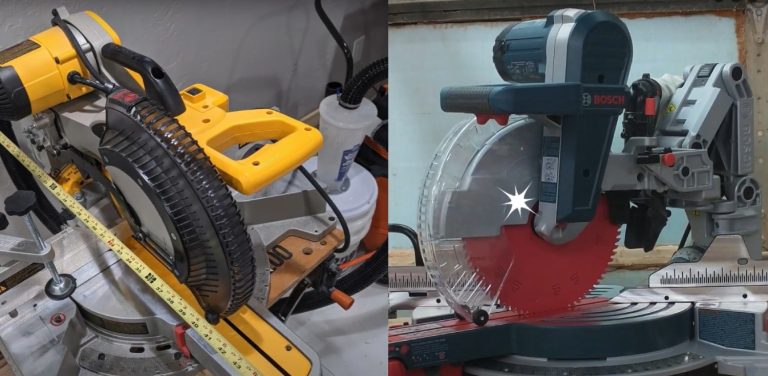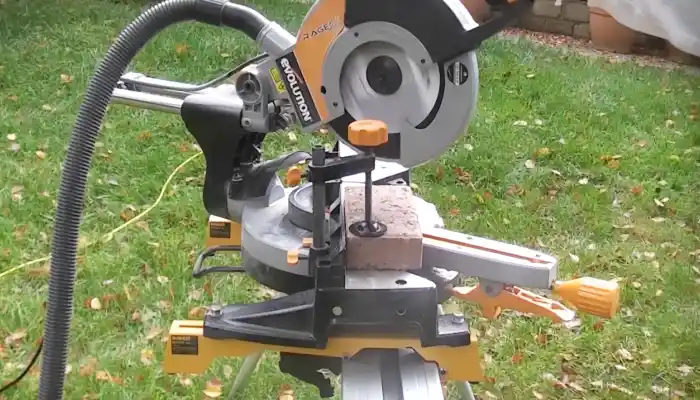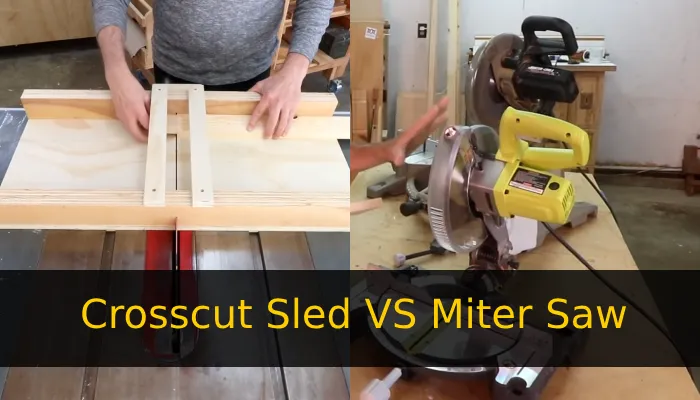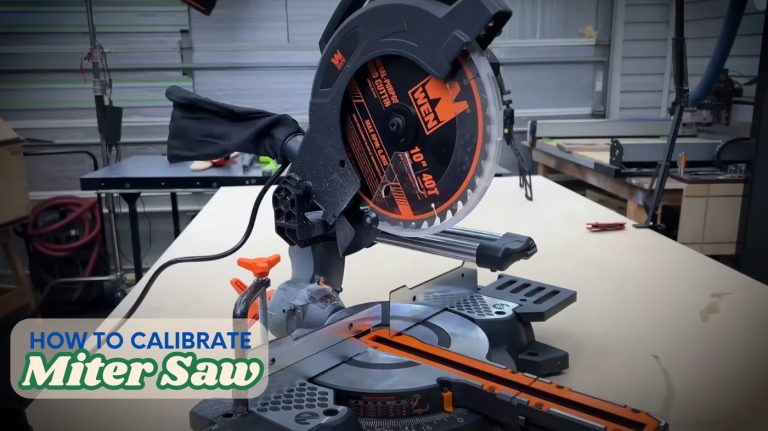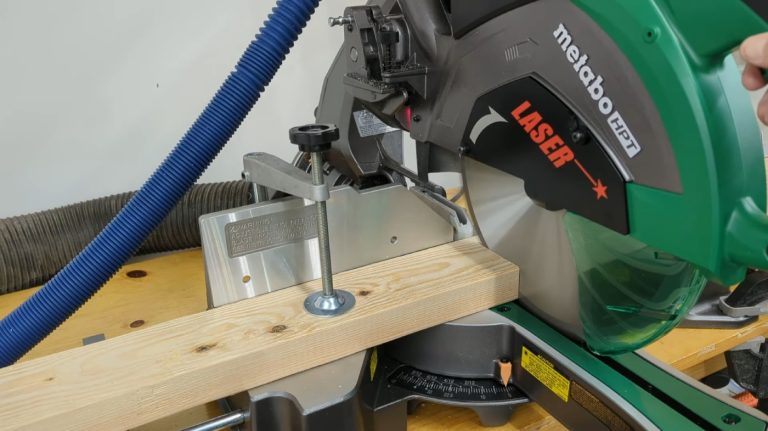Ridgid Miter Saw vs Dewalt: Ten Differences
Are you torn between choosing a Ridgid Miter Saw or a Dewalt Miter Saw? Regarding making precise cuts, both Ridgid and Dewalt have built a reputation for excellence. However, some crucial factors set them apart and can greatly impact your decision.
Ridgid Miter Saw offers a positive bevel feature and positive miter stops for efficient and accurate cuts at various angles, while Dewalt Miter Saw offers a wider miter and bevel range and has an XPS crosscut positioning system for precise cutting alignment.
Also, the Ridgid Miter Saw has a highly effective dust collection system, while Dewalt Miter Saw has an advanced dust collection system. Today we will explore the key differences between the miter saw. So, let’s get started and make an informed decision together.
The Differences Between Ridgid Miter Saw and Dewalt Miter Saw
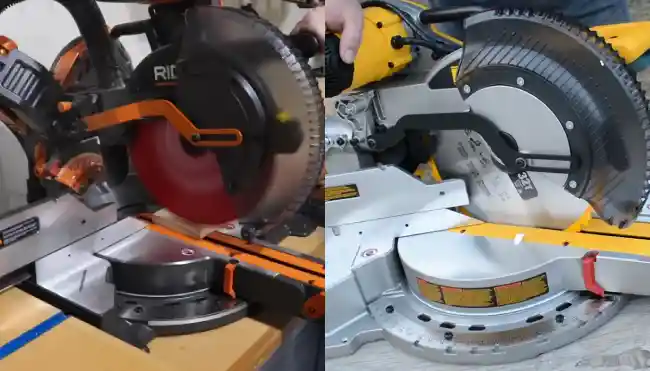
When comparing the Ridgid Miter Saw and the Dewalt Miter Saw, there are several key points to consider. But at first, in terms of durability and reliability, the Ridgid Miter Saw has a slight edge in this category due to its solid construction and reputation for being able to withstand heavy use.
- Durability and Reliability
- Miter & Bevel Range Comparison
- Blade Size and Type
- Weight and Maneuverability
- Dust Collection Efficiency
- Precision Cutting Capabilities
- Cross-Cut Capacity
- Crown Molding Compatibility
- Miter & Bevel Stops
- Blade Brake & Safety Feature
- Price and Value
Durability and Reliability
If you need a miter saw that can handle tough jobs and withstand the test of time, the Ridgid Miter Saw is the way to go. Known for its durability, this saw is built to last and can handle even the most demanding projects.
Its solid construction and high-quality materials ensure it can withstand heavy use without compromising performance.
However, users have praised Dewalt’s ability to consistently deliver precise cuts, allowing for accurate and clean results every time. The Dewalt Miter Saw has a reputation for reliability, making it a trusted choice for professionals and DIY enthusiasts alike.
Miter & Bevel Range Comparison
With its wide miter and bevel range, you’ll be able to tackle any angle and achieve the perfect cut every time. The Ridgid Miter Saw comes with a 70° meter range, allowing you to make precise angled cuts with ease. Also, it has adjustable miter and bevel detents with bypass, giving you even more control over your cuts.
In contrast, the Dewalt Miter Saw features a stainless-steel miter detent plate with 14 positive stops, ensuring accurate and consistent cuts. It also has a bevel range of 0 to 48 degrees to the left and 0 to 3 degrees to the right, allowing you to make bevel cuts with precision.
Blade Size and Type
With its 12-inch carbide-tipped blade, the Ridgid Miter Saw offers impressive cutting power and durability. This blade type is known for its ability to withstand tough materials and maintain sharpness over time.
In comparison, the Dewalt Miter Saw is equipped with a 12-inch stainless-steel blade, which is also highly durable but may offer a different level of cutting power than the carbide-tipped blade.
To better understand the differences, let’s compare the two blades in terms of size and type:
| Blade Features | Ridgid Miter Saw | Dewalt Miter Saw |
| Blade Size | 12 inches | 12 inches |
| Blade Material | Carbide-tipped | Stainless-steel |
Weight and Maneuverability
Carrying the Dewalt model feels like a feather in your hand compared to the heavy weight of the Ridgid, allowing for effortless maneuverability.
The Ridgid Miter Saw, weighing approximately 65 pounds, is slightly heavier than its Dewalt counterpart, which weighs only 42 pounds. This weight difference significantly impacts how easily transporting and using the saws is.
Its weight can make it more challenging to carry, especially for longer distances or when working on multiple job sites.
In contrast, the Dewalt’s lighter weight makes it much more manageable and convenient to move around. This increased maneuverability can save you time and energy during your projects.
With the Dewalt, you can easily navigate tight spaces and transport the saw.
- The lightness of the Dewalt allows for swift and precise cuts.
- You can lift and set up the Dewalt effortlessly, saving you time on the job.
- The Ridgid’s heavier weight can cause fatigue and may limit productivity.
- The Dewalt’s maneuverability allows for increased flexibility in various work environments.
- The lightweight design of the Dewalt makes it an excellent choice for contractors who are constantly on the move.
Dust Collection Efficiency
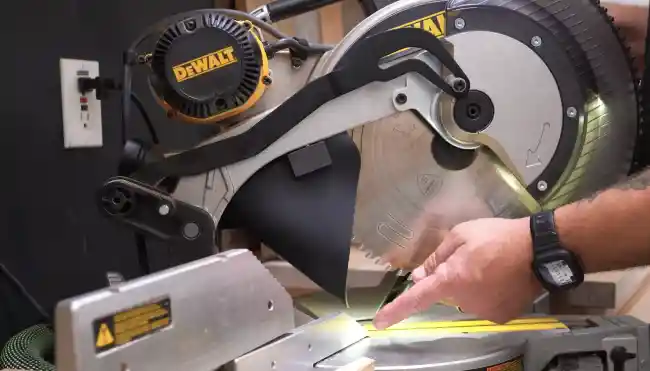
These power tools’ superior dust collection systems ensure a cleaner and safer work environment. The Ridgid Miter Saw’s built-in dust collection port is compatible with common 1-1/4 in. wet/dry vacuum adapters, making dust extraction efficient and convenient.
Alternatively, the Dewalt Miter Saw features a dust collection system that minimizes sawdust in the workspace, keeping it cleaner. Both power tools offer effective dust collection solutions, improving the safety and cleanliness of the work area.
Precision Cutting Capabilities
Both power tools offer a range of features that contribute to accurate and precise cuts. The Ridgid Miter Saw boasts a positive bevel feature, allowing for quick adjustment and positive stops at common angles. This feature ensures efficient and accurate bevel cuts.
Meanwhile, the Dewalt Miter Saw has an XPS crosscut positioning system, which provides a shadow line on the workpiece for precise cutting alignment. This system enhances the precision and accuracy of cuts, giving you confidence in the quality of your work.
Cross-Cut Capacity
Impressively, the Ridgid Miter Saw and the Dewalt Miter Saw offer remarkable cross-cut capacities, allowing you to tackle a wide range of materials and achieve precise cuts.
The Ridgid Miter Saw boasts a significant cross-cut capacity, enabling you to handle larger pieces of material with ease. With its positive miter stops at common angles, you can make accurate cuts at various angles, ensuring precision in your work.
Conversely, the Dewalt Miter Saw features a tall sliding fence that provides vertical support for larger stock materials, such as crown molding. This additional support enhances stability and control, allowing you to cut through larger pieces of material easily.
Crown Molding Compatibility
Easily tackle crown molding cuts with precision using the crown stop mounting holes on both the Ridgid Miter Saw and the Dewalt Miter Saw. These mounting holes allow for compatibility with common stops and Ridgid crown molding stops (not included), ensuring accurate and clean cuts every time.
The Ridgid Miter Saw’s crown st0op mounting holes provide the user with the ability to make precise cuts on large or complex pieces of crown molding.
Similarly, the Dewalt Miter Saw offers a tall sliding fence that offers vertical support for larger stock materials like crown molding, making it suitable for cutting crown molding.
Blade Brake & Safety Feature
With their innovative blade brakes and advanced safety features, these miter saws ensure efficient and secure cutting experiences. The Ridgid Miter Saw’s blade brake allows quicker transitions between cuts, improving overall efficiency in the workplace.
Also, the Dewalt Miter Saw offers a transparent blade guard, providing clear visibility of the cutting area while maintaining maximum safety. Its electric brake further enhances safety by quickly stopping the blade’s rotation, minimizing the risk of accidents.
The ambidextrous trigger on the Dewalt Miter Saw allows for convenient operation, accommodating both left and right-handed users. Furthermore, both miter saws prioritize safety by incorporating features that minimize the chances of injuries, making them reliable tools for professionals and DIY enthusiasts alike.
Price and Value
Despite the price difference, the Dewalt Miter Saw provides exceptional value for professionals and serious DIY enthusiasts, leaving no room for disappointment. With its higher price point, the Dewalt Miter Saw offers a range of additional features and flexibility that make it a worthwhile investment.
While the Ridgid Miter Saw may be more affordable, the Dewalt Miter Saw offers superior value with its versatility, durability, and accuracy, making it the go-to choice for professionals and serious DIY enthusiasts.
Does the Ridgid miter saw come with a blade?
The Ridgid miter saw includes a 12-inch blade and a wrench. It saves you the hassle of purchasing these items separately, which can be quite convenient. Although the Ridgid miter saw comes with a 12-inch blade and blade wrench, it doesn’t have additional accessories.
This means that if you’re looking for a miter saw that comes with all the bells and whistles, you might want to consider other options.
Ridgid or Dewalt: Which is the best-sliding compound miter saw?
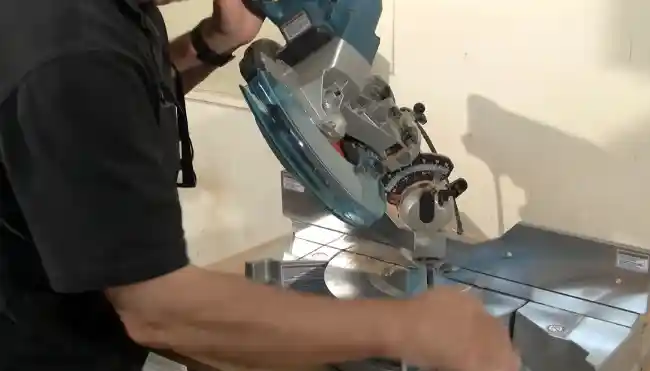
The Ridgid miter saw is known for its impressive cutting speed, making it a great option for those who need to complete their projects quickly. Conversely, the Dewalt offers excellent precision and accuracy, ensuring clean and precise cuts.
But if budget is a concern, Ridgid is the winner here. It’s the least expensive option, providing good value for your money. So when choosing the best-sliding compound miter saw, the Ridgid miter saw is the clear winner.
What is the key difference between a single and double-bevel miter saw?
The key difference between single and double-bevel miter saws is that single-bevel miter saws can only tilt in one direction (either left or right), while double-bevel miter saws can tilt in both directions, allowing for greater versatility and ease of use.
This means that with a single bevel miter saw, you can only make bevel cuts in one direction, either to the left or right. But, with a double bevel miter saw, you can make bevel cuts in both directions without flipping the workpiece.
This is particularly useful when working on complex projects that require a variety of angled cuts. The ability to tilt the saw in both directions makes it easier to create compound cuts, where both the miter and bevel angles must be adjusted simultaneously.
Does blade size matter on a miter saw?
Choosing the right blade size for your miter saw can greatly impact the length and precision of your cuts, allowing you to handle a wide variety of woodworking projects with ease. Eight, ten, and twelve inch blades are the most common sizes for miter saws.
Larger-diameter blades can make longer cuts, which is beneficial when working on larger pieces of wood. It is also important to consider the number of teeth on a blade when choosing a blade for what type of work it will be used for.
Blades with more teeth provide smoother cuts and are ideal for fine woodworking projects, while blades with fewer teeth are better suited for tougher cuts in construction materials.
It is important to consider the specific requirements of your project when selecting the blade size, as it can greatly affect the efficiency and quality of your work.
Ridgid or Dewalt Miter Saw: Choose the Best for Your Needs
When comparing the Ridgid Miter Saw and Dewalt Miter Saw, it’s clear that both have their own strengths and weaknesses. The Ridgid Miter Saw does come with a blade, which is convenient for users.
However, Dewalt takes the lead with its superior performance and precision when considering sliding compound miter saws. The key difference between single and double bevel miter saws lies in the ability to make angled cuts in both directions.
While blade size does matter on a miter saw, it isn’t the sole determining factor for its performance. Just like a sharp sword in the hands of a skilled warrior, the right miter saw, whether Ridgid or Dewalt, can be a powerful tool in your arsenal.

